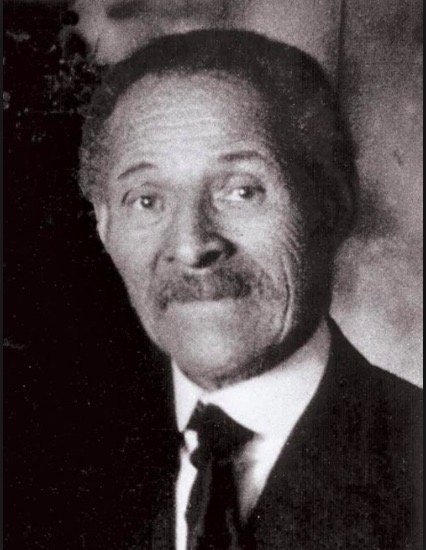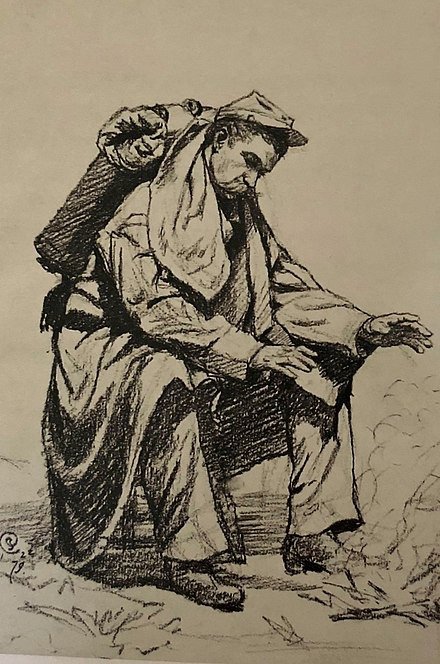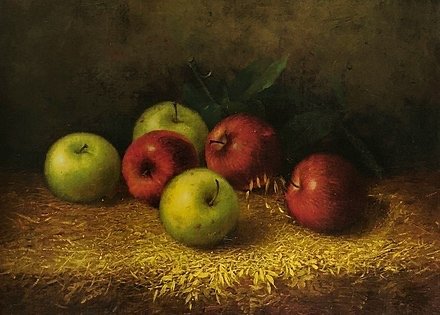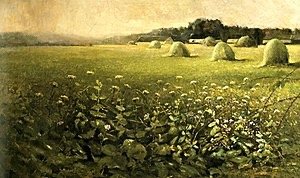Artist to Know: Charles Ethan Porter - Still Life Master
Charles Ethan Porter (1847-1923) was an African American painter who painted beautifully detailed, almost photo real paintings focusing primarily on creating still life paintings.
How does someone who has artistic talent and a deep desire to exhibit it to the world survive when notoriety and fame are illusive? Porter’s life is an example of how artistic work can transcend time and circumstance to influence future generations of artists and make a profound impact on American art history.
Artist Charles Ethan Porter
Born in 1843 in Hartford, Connecticut, Porter’s worked as a servant and his father most likely worked in the mills. Porter was one of at least 9 siblings and a life of poverty and hardship led to the death of 7 of his siblings from illness and 1 from war. Two of Porter’s brothers enlisted with the Union Army in 1863, one was killed in battle and the other became seriously ill from malaria.
Boy and Book (c. 1880); Civil war soldier (1872); Banjo player (c. 1880).
Porter became the first person from his family to attend high school and graduated in 1865. Porter left home in 1868 to study painting at Wesleyan Academy (now known as the Wilbraham & Monson Academy) in Wilbraham, Massachusetts where he experienced discrimination and resistance to being accepted as a professional painter who was African American.
Porter eventually graduated and in 1869 Porter enrolled at the prestigious National Academy of Design in New York City and was one of the first African Americans to be accepted and exhibit there. It was while at the National Academy of Design that Porter began to exhibit and gain acclaim for his work.
Mountain Laurel (1888) oil on canvas, Smithsonian American Art Museum, Gift of Alfred T. Morris, Sr., 2000.10
In 1873, Porter studied with landscape and portrait painter Joseph Oriel Eaton and he began to sell his work. Porter would study in New York City from the fall to the spring and then return to Rockville, Connecticut to teach art to students and paint. One of his paintings sold for $175 which was considered a high price for an American artist.
In 1878, Porter moved to Hartford, Connecticut and set up a studio to show his work. The area was experiencing an economic boom and many wealthy patrons were impressed by Porter’s formal art training in comparison to many of the self-taught artists and Porter was the only artist who focused on painting still life paintings. It was during this period that he painted many of his most well known works. His paintings of apples became popular and apples became a reoccuring theme for his work.
Flies on a Plate (1878); Apples on the Ground (1878); Still Life (c. 1880); Still Life with Apples (1886); Untitled (Cracked Watermelon) (1890).
Unfortunately, it was during this period that American collectors became less interested in American artists and preferred to buy art from European artists. Many American artists suffered establishing sales of their work and many left for Europe. Porter sold off much of his work to be able to earn enough money to travel to Paris in 1881 to paint.
In Paris, Porter studied the work of painters from the Barbizon School and he enrolled in the Ecole des Arts Decoratifs but when funds ran low, he returned home to New York City and opened a studio and continued to paint and teach art.
While Porter struggled to build his artistic career he was friends with literary talents such as Mark Twain. In 1883, Porter wrote to Twain revealing his longing for African American artists like himself to finally be recognized, respected and lauded just as white artists of the time period were.
During the 19th century, surprisingly still life paintings were considered by some as less elevated and considered a “lower form of art” than landscapes or portrait painting. Compounded by the racial bias against validating art created by artists of color, Porter struggled his entire career to be considered by collectors and was overlocked for decades by the art world.
Landscape with Grain Stacks (c. 1882); Autumn Landscape (c. 1891).
Despite Porter’s struggle to gain widespread acceptance of his work, he was successful in gaining collectors in his local area of
Today Porter is considered a trailblazing painter for his delicate attention to detail of seemingly simple still life subjects such as fruit, flower arrangements and even flies.
His distinctive style and use of lighting and color to reveal the beauty of everyday items made Porter’s work a precursor to modern work to come by artists who focused on illuminating complexity and
While Porter is best known for his detailed depictions of still life subjects he also painted landscapes in addition to drawing human subjects from early in his art career. Porter’s focus on painting flowers which are considered some his greatest works were produced between 1885 and 1890.
Peonies in a Bowl (1885); Yellow Roses in a Vase (1890); Peonies in a Vase (c. 1885); Lilacs (1890).
There are no known artistic works from Porter in the 20th century although there is evidence that Porter taught art students in the period up to his death in 1923.
Largely forgotten during the most of the 20th century, collectors and art historians rediscovered Porter and his work during the 1980s.
In 2008, his work was presented for the first time in a museum exhibit at the New Britain Museum of American Art in New Britain, Connecticut.
Since then, his work has been collected by the Metropolitan Museum of Art, Smithsonian American Art Museum, Birmingham Museum of Art, San Antonio Museum of Art, Connecticut Museum of Culture and History, and Wadsworth Athenaeum.
Porter’s life and work is a testament to the perserverence and grit that every artist who creates emobdies. Without knowing for certain that his work would become admired and coveted, Porter created despite the hardship and uncertainty of everday life. Hopefully he now knows that all of his talent and work was not in vain and will be valued by artists, historians, collectors and art lovers for generations.
















